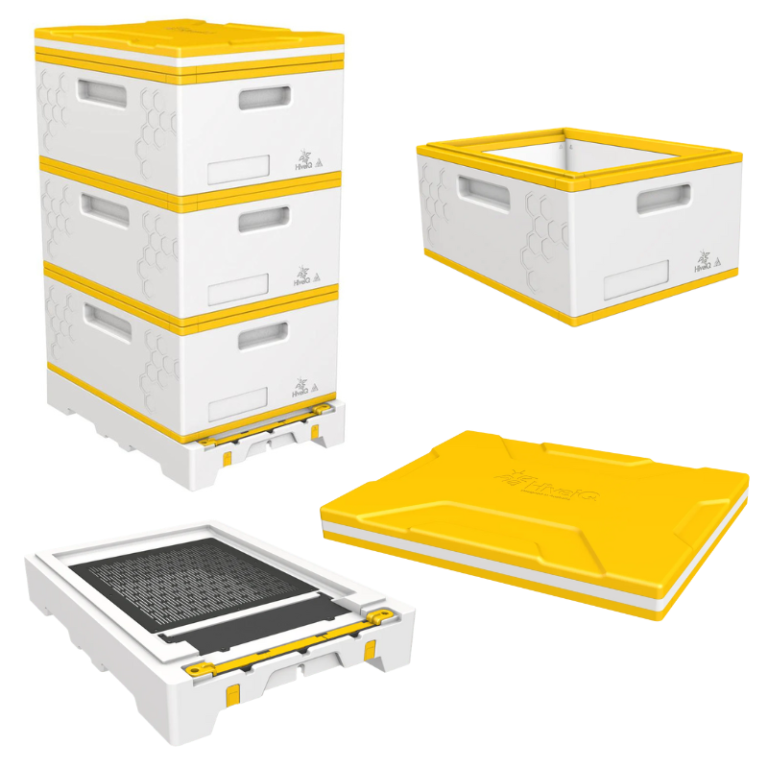Table of Contents
As beekeepers, we want to do what we can to help our bees out. Honey bees take their cues from nature and follow the seasons, expanding their nest in the spring and summer and contracting it in the fall and winter.
Hive insulation will vary based on the environment the bees live in. All honey bees are cavity dwellers and choose to live in a well-insulated climate, but bees can live in some crazy places.
While some types of bees will live in the ground or independently in a small cavity, honeybees need a large space to live in. But they typically choose to live in a cavity instead of the open air.
So the cavity has to have many of the right qualities before they can move into it. The overall volume and the thickness of the walls make a difference to bees, and given the choice, bees prefer a cavity similar to a tree trunk.
Just ask a tree cutting service and you’ll soon learn how many bees they have to deal with in a tree.
What Bees Prefer Naturally and Why
Since the first beekeeper put a colony of wild bees in a container, we have been trying to merge what the bees want and what the beekeeper wants. Sometimes the bees win and get their hive of choice, and other times, beekeepers do.
Across most of the world, beekeepers have placed bees in wooden boxes with 3/4-inch walls. This is because these are the size boards we manufacture for homes, desks, flooring, and more.
But when given the opportunity, bees choose to build their nest in the cavity of a tree, which naturally has extremely thick walls. These thick walls produce a thermal barrier between the daily fluctuations of outside temperatures. The cold air outside the beehive has difficulty penetrating the dense walls of the tree.
At the same time, the warm air during the summer has trouble penetrating the same dense walls. The bees do a great job at heating and cooling the nest, even though they do not heat or cool the entire hive.
Cold weather and warm air have a tough time penetrating the dense walls of a tree trunk.
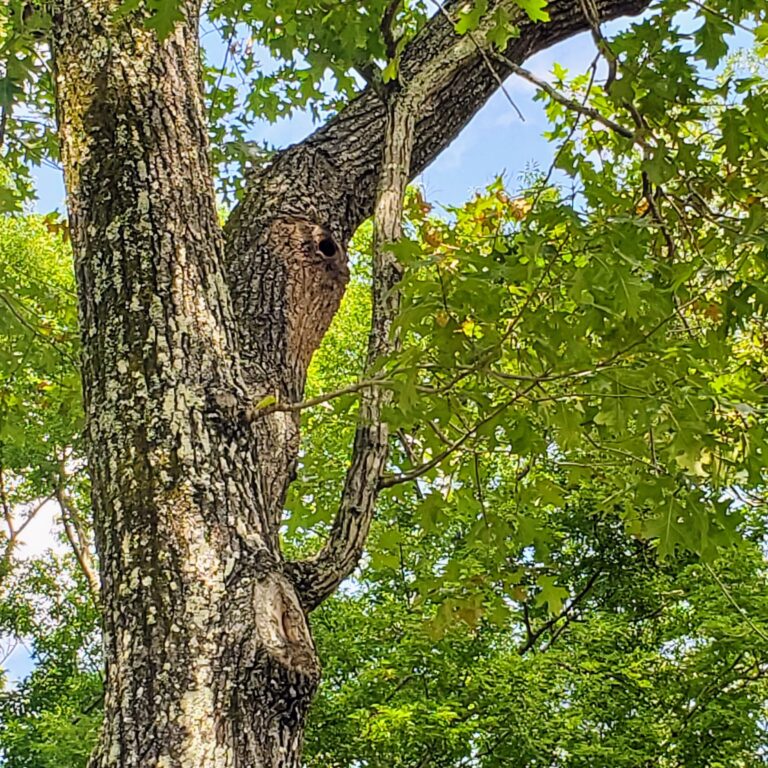
The Basics Behind Insulated Beehives
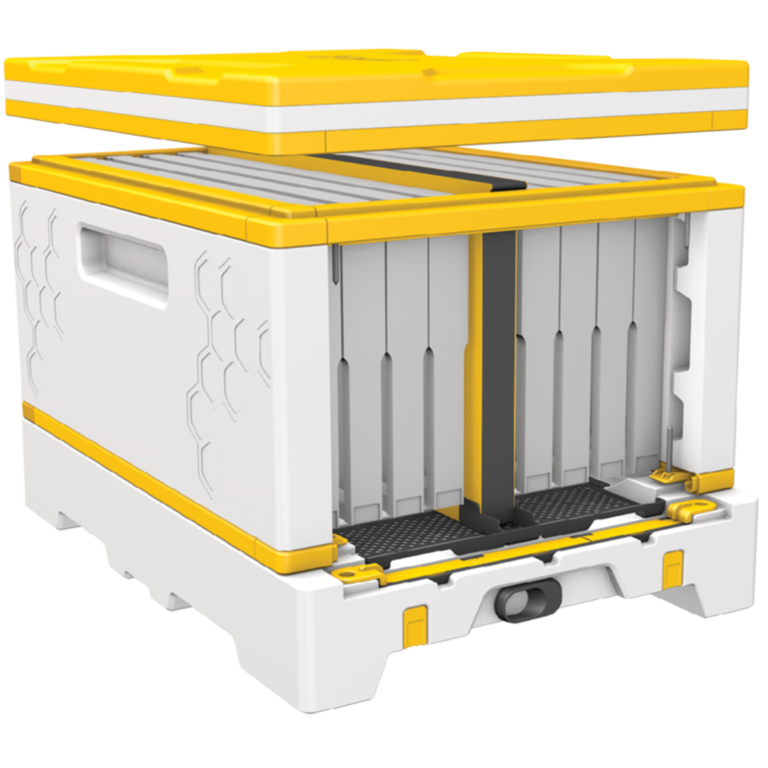
Insulated beehives aim to replicate the natural conditions that bees prefer. They work by reducing the amount of heat that enters or leaves the hive, helping to maintain a stable internal temperature. This is particularly important during the winter months when bees cluster together to generate heat and keep the hive warm. An insulated hive reduces the amount of energy bees need to expend on temperature regulation, allowing them to focus more on honey production.
It’s easy for us all to understand the need for insulation in the winter as we think about the cold air coming into the house through drafty windows. But insulation is extremely helpful in the summer as well. An insulated bee hive, just like the trunk of a tree, is a barrier to the outside heat of the summer. The heat of the summer doesn’t radiate into the honey bee nest as easily as it does with 3/4-inch boards.
The best analogy I can think of is an insulated beehive in the summer is like a basement in a home. During the summer, most basements stay relatively cool, even without air conditioning. This is because of the incredible amount of insulation that comes from the dirt that surrounds the basement walls.
Beehive Insulation: A Year-Round Solution for All Climates
In warmer climates, insulated beehives help bees maintain optimal internal temperatures and humidity levels, even in the heat of summer. This reduces the energy bees expend on cooling efforts, allowing them to focus more on foraging, nectar collection, and small hive beetle destruction.
In cold weather, these hives retain the heat generated by bees, reducing the amount of energy and honey consumed to keep the hive warm during winter. This insulation also keeps everything inside the hive dry, preventing moisture buildup that can lead to mold and other issues.
The less energy a colony of bees commits to maintaining the right temperature and humidity in the hive, the more energy the bee colony can spend on foraging, feeding, protecting, etc…
Just think, the winter cluster spends less energy trying to stay warm. Think about how much less stress that is on the colony.
The Modern Beehive with Built in Hive Insulation
Hive insulation is usually something advertised to northern beekeepers who have to have prolonged cold weather and worry about digging their bees out of the snow.
Southern beekeepers don’t usually think about insulation as they don’t like to think about the possibility of cooking their bees. But this is a myth, as the additional insulation helps the bees immensely. It doesn’t create an oven for the bees, it does the opposite.
A system of insulated hives designed by HiveIQ from Australia is built for beekeepers and their bees. Ideally, all honey bees would live in a tree, but this doesn’t work great for beekeepers. Beekeepers still need a modular system that works for them. This is the Langstroth system, but it lacks the insulation of a tree.
The designers and beekeepers behind HiveIQ are future-proofing their system by including RFID tags, adapters for pollen traps, rails for varroa boards, and spaces for hive weight, humidity, and ambient temperature sensors.
Tree Trunk Insulation VS Hive IQ Insulated Hives
The dense, insulated walls of the Hive IQ hives are designed to be as thick as possible while not impeding the needs of the beekeeper. These bee hives from Hive IQ have the same insulating ability as a tree trunk with 6.32-inch thick walls, creating a very dense hive body that keeps a colony at the right temperature.
That is impressive, considering the thickness of the insulated walls are only 1.5 inches thick, and they can do the same work as most trees. If you start to think about how large this tree is, it’s amazing.
The diameter of the tree would be 12.64 inches plus the size of the cavity the bees live in, which is at least 16 inches. The Hive IQ bee hive is the equivalent of a 28-inch thick tree. Not a bad insulation comparison.
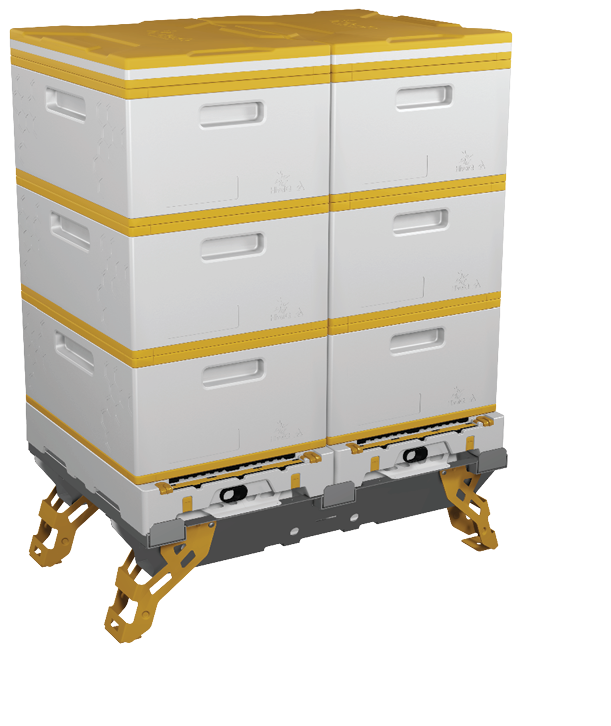
Insulated Hives For Backyard And Commercial Beekeepers
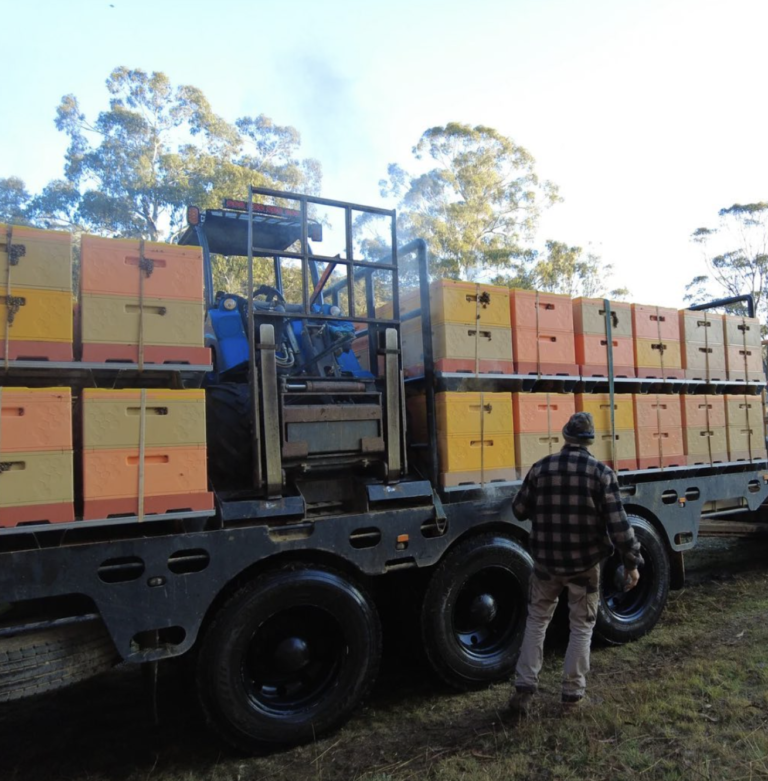
Both commercial and backyard beekeepers would use the same base system, but there are adaptions to the base system that makes it work great for commercial beekeepers. Both beekeepers can use the HiveIQ dashboard for collecting and reporting data on the hives.
But the commercial beekeepers can benefit from their compatibility with standard Langsroth frames, the same exterior dimensions as a 10-frame Langstroth hive, 2-way and 4-way commercial pallets, high durability of the foam, durable frame rest, hive tool damage-resistant corners, and more.
Insulating beehives has been difficult to do for large operations because of the products on the market don’t scale well. Such as foam board insulation panels, hive wraps that go around the hive like the bee cozy, double walled hives, insulated telescoping cover or the variety of other types of insulating material that beekeepers use to insulate hives.
HiveIQ Features We Love
Adjustable Hive Entrance
The entrance of the hive features a 3-way adjustable entrance with built-in magnets. This allows you to quickly adjust or completely close the entrance if you need to move the colony, partially close the entrance or perform an oxalic acid vaporization.
An easy to adjust hive entrance is a very helpful feature. Just think about how easy that is when you have to move a colony of bees.
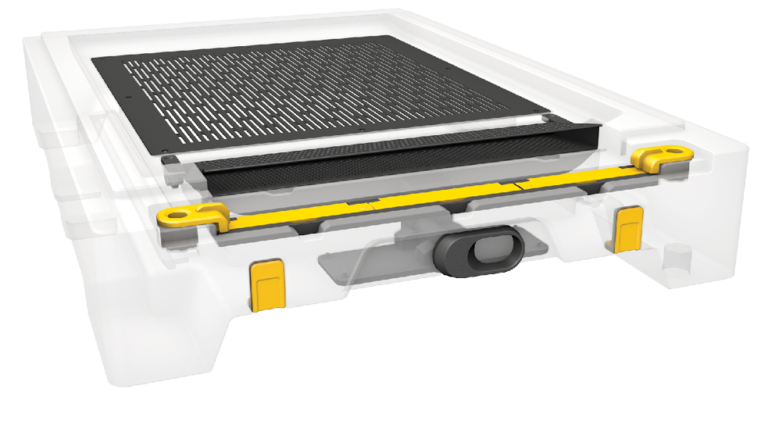
Overlapping Edges
The top and bottom of each box are designed to nest together, which helps keep the stack together. While this feature is pretty cool, a nice side effect is that the edge that you would normally push your hive tool into is protected. You won’t have to worry about damaging the corners of your boxes. No matter how careful you are, it’s easy to damage the wooden corners of your boxes.
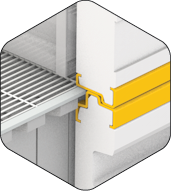
No Inner Cover
The HiveIQ system is designed to work without an inner cover. This means there is one less thing to purchase and handle. This isn’t a problem when trying to remove the top cover, as the design easily leaves room to remove the top with a hive tool.
Small Hive Beetle Protection
The edges that come together create a seal that small hive beetles cannot penetrate. Unline pine boxes that can warp, rot or shift, these Hive IQ boxes create such a tight, insulated seal that the only entrance the bees can use is through the front. A place that is easily guarded by bees.
Extreme Insulation
The walls of the hive are more than 1 1/2 inches thick, which gives the sides of the hive a R-factor of 7.9. The insulating factor of a 3/4-inch pine board is .94. A huge difference.
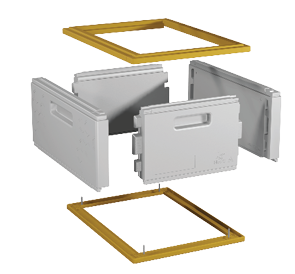
Proper Airflow
With all the insulating material around the sides, bottom, and top of the hive, you might think the air would be stale and trapped in the hive. The bottom board on the hive has just the right size entrance opening and screened bottom to provide the right amount of airflow. This configuration works in both warm and colder climates. It also prevents too much moisture from developing in the hive and provides just enough fresh air.
Smart Technology In Bee Hives
Hive IQ has a whole enterprise level platform for monitoring, recording and checking their hives. The dashboard is designed to work with both hobby and commercial beekeepers and is a handy way to track the quality and growth of the hives.
If any beekeeper has been in business for long, they know that tracking changes in hives is necessary, but difficult to do.
Future Improvements
The whole system is growing and developing, especially since coming to the United States. They are introducing new designs, feeders, tools, stands and more to compliment the whole system.
It’s goo to know that a system is well supported when you buy into it, so you know the hives will serve you well into the future. Future proofing is really important when designing a new bee hive.
Insulated Bee Hives For Sale
The options available on the market for insulated hives range from the hive wrap made by NOD to the plastic insulated hives by Apimaye.
We like the HiveIQ over both of those options as it is better insulated, easier to use, and less likely to become damaged over time. Plus, the Hive IQ system can work year around and doesn’t need any modification from winter to summer.
At Foxhound Bee Company, we have partnered with HiveIQ to carry their supplies. These Australian hives are coming to the US, and their product line is expanding to meet the needs of American beekeepers.
The available kits, boxes, and pieces can be found online and also in our retail store.
